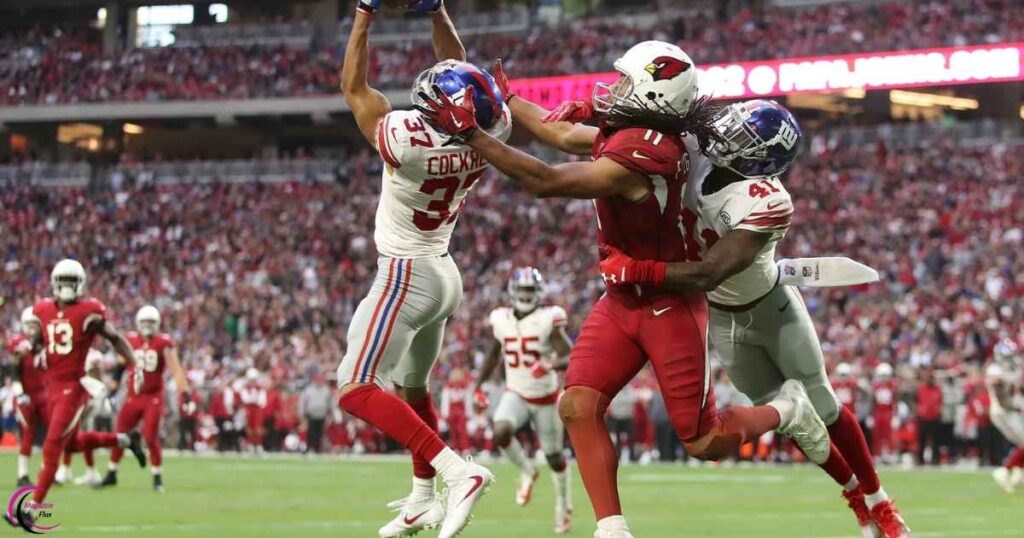The NFL matchup between the Chicago Bears and Arizona Cardinals was a clash that combined strategy, skill, and moments of individual brilliance. Fans witnessed a contest defined by tactical execution, strong quarterback performances, and defensive resilience. The Chicago Bears vs Arizona Cardinals match player stats offer a detailed lens into how each player and unit influenced the game, highlighting both team cohesion and standout individual moments.
This report breaks down the full performance of both teams, covering quarterback leadership, rushing efficiency, receiving impact, defensive contributions, special teams performance, coaching strategies, and the key moments that shaped the game.
Quarterback Performance: Leadership and Accuracy Under Pressure
The quarterback position is often the most critical in any NFL game, and this matchup was no exception. Both Justin Fields of the Bears and Kyler Murray of the Cardinals played pivotal roles in their team’s offensive production, showcasing leadership, athleticism, and decision-making under pressure.
Justin Fields (Chicago Bears)
Fields has been steadily developing as the Bears’ franchise quarterback, and this game demonstrated his growth. He completed 21 of 32 passes for 245 yards, throwing 2 touchdowns with 1 interception. Beyond his passing stats, Fields contributed 68 rushing yards, reflecting his dual-threat capability.
Fields’ performance highlighted his ability to extend plays outside the pocket, read defenses effectively, and maintain composure during high-pressure situations. His connection with wide receiver DJ Moore was especially impactful, resulting in crucial first downs and key red-zone conversions.
Kyler Murray (Arizona Cardinals)
Murray, known for his explosive mobility and quick decision-making, delivered an electrifying performance. He completed 24 of 36 passes for 272 yards, throwing 3 touchdowns with 1 interception and added 54 rushing yards.
Murray’s ability to combine precise throws with timely scrambles kept the Bears’ defense on their toes. His connection with Marquise “Hollywood” Brown and tight end Trey McBride allowed Arizona to sustain long drives and produce big-play opportunities. While Murray’s style was dynamic, occasional inconsistencies in rhythm and protection limited sustained momentum.
Key Takeaway: Fields’ poise and ball-control strategy slightly outshone Murray’s explosiveness, particularly in late-game situations where possession and clock management became crucial.
Also read: New Orleans Saints vs Seahawks Match Player Stats – Offensive and Defensive Showdown
Rushing Attack: Ground Game Dominance
The rushing game played a major role in controlling tempo and wearing down defenses. Both teams leaned on their ground attack, but Chicago’s balance gave them a slight edge in time of possession.
Chicago Bears Rushing Stats
- Khalil Herbert: 17 carries, 93 yards, 1 touchdown
- Justin Fields: 9 carries, 68 yards
- Roschon Johnson: 6 carries, 32 yards
Herbert’s vision, coupled with Fields’ mobility, allowed Chicago to exploit defensive overcommitment. Using read-option plays and strategic quarterback runs, the Bears controlled the line of scrimmage and maintained possession, keeping Arizona’s offense off the field.
Arizona Cardinals Rushing Stats
- James Conner: 15 carries, 71 yards, 1 touchdown
- Kyler Murray: 7 carries, 54 yards
- Emari Demercado: 5 carries, 21 yards
Conner’s physicality complemented Murray’s elusiveness, creating occasional big gains. However, inconsistency on third downs and a lack of sustained blocking limited Arizona’s ability to dominate the ground game consistently.
Receiving Game: Precision and Playmaking
The receiving units of both teams provided crucial production and showcased depth. Efficient route running and timely catches helped each team sustain drives and create scoring opportunities.
Chicago Bears Receiving Stats
- DJ Moore: 8 receptions, 110 yards, 1 touchdown
- Cole Kmet: 6 receptions, 65 yards
- Darnell Mooney: 3 receptions, 40 yards
- Roschon Johnson: 2 receptions, 18 yards
- Tyler Scott: 1 reception, 12 yards
Moore’s precise route running and ability to gain yards after the catch made him the most reliable target for Fields. Kmet’s presence was critical in short-yardage situations, particularly on third downs and red-zone opportunities.
Arizona Cardinals Receiving Stats
- Marquise Brown: 7 receptions, 102 yards, 2 touchdowns
- Trey McBride: 6 receptions, 78 yards, 1 touchdown
- Rondale Moore: 4 receptions, 47 yards
- Michael Wilson: 3 receptions, 25 yards
- James Conner: 2 receptions, 20 yards
Brown’s speed stretched the field vertically, while McBride’s hands and route precision made him a reliable target in the intermediate passing game. Together, they accounted for the bulk of Arizona’s passing production
Defensive Efforts: Tackles, Sacks, and Turnovers

Defense played a defining role, with both units delivering impactful plays that shaped momentum.
Chicago Bears Defensive Stats
- Tremaine Edmunds: 10 total tackles, 1 sack
- Montez Sweat: 2 sacks, 4 quarterback pressures
- Jaylon Johnson: 1 interception, 3 pass deflections
- Jaquan Brisker: 7 tackles, 1 forced fumble
Chicago’s defense excelled in creating pressure and disrupting the Cardinals’ rhythm. Johnson’s interception prevented a potential touchdown, while Brisker’s physicality near the line of scrimmage limited Arizona’s rushing efficiency.
Arizona Cardinals Defensive Stats
- Budda Baker: 9 total tackles, 1 fumble recovery
- Dennis Gardeck: 1.5 sacks, 3 tackles for loss
- Zaven Collins: 8 tackles
- Marco Wilson: 1 interception
Arizona displayed aggression and strong coverage, particularly through Baker’s leadership. However, missed tackles and coverage breakdowns, especially in the second half, allowed Chicago to control the game clock and sustain drives.
Special Teams Impact
Special teams often play a subtle but pivotal role in NFL outcomes.
Chicago Bears Special Teams
- Cairo Santos: 3/3 field goals, long of 48 yards
- Trenton Gill: 4 punts, 45-yard average
- Velus Jones Jr.: 2 kick returns, 56 total yards
Santos’ reliability was key in extending leads and securing points, while Gill’s punting maintained field position advantage.
Arizona Cardinals Special Teams
- Matt Prater: 2/2 field goals, long of 51 yards
- Blake Gillikin: 5 punts, 44-yard average
- Greg Dortch: 3 kick returns, 78 total yards
Prater’s accurate long-range kicking kept Arizona competitive, while returners provided decent field positioning. However, inconsistency in coverage gave Chicago extra yardage opportunities.
Time of Possession and Team Efficiency
Control of the ball often determines the flow and outcome of a game. Chicago excelled in sustaining drives and executing under pressure.
- Chicago Bears Time of Possession: 33:48
- Arizona Cardinals Time of Possession: 26:12
- Third Down Efficiency: Bears 8/14 (57%), Cardinals 5/12 (42%)
- Turnovers: Bears 1, Cardinals 2
Chicago’s ability to convert on third downs and manage possession allowed them to dictate pace and maintain defensive stamina throughout the game.
Coaching Strategies and Adjustments
Chicago leaned heavily on its rushing game early, mixing in play-action passes and quarterback runs to exploit Arizona’s defensive schemes. Luke Getsy’s offensive strategy maximized Fields’ strengths.
Arizona head coach Jonathan Gannon emphasized tempo-based drives and spread formations, attempting to use Murray’s mobility to create mismatches. Mid-game defensive adjustments by Chicago, like zone coverage shifts, neutralized key intermediate passing threats.
Key Moments That Defined the Game
Several plays proved decisive in shaping the outcome:
- Jaylon Johnson’s Interception (2nd Quarter): Shifted momentum to the Bears.
- DJ Moore’s 35-yard Touchdown (3rd Quarter): Extended the lead for Chicago.
- James Conner’s Goal-Line TD (4th Quarter): Kept Arizona in contention.
- Cairo Santos’ Late Field Goal: Secured the Bears’ win.
- Montez Sweat’s Final Sack: Ended Arizona’s last-ditch comeback attempt.
Team Chemistry and Player Development
In Chicago Bears vs Arizona Cardinals Match Player Stats one of the most notable takeaways was Chicago’s growing player chemistry. Fields and Moore’s connection continues to strengthen, while the offensive line showed improved cohesion.
For Arizona, Murray’s synergy with Brown and McBride is promising. Defensive young players like Gardeck and Wilson gained valuable experience against a disciplined Bears offense.
Statistical Summary: Complete Overview
| Category | Chicago Bears | Arizona Cardinals |
|---|---|---|
| Total Yards | 410 | 387 |
| Passing Yards | 245 | 272 |
| Rushing Yards | 165 | 115 |
| First Downs | 25 | 20 |
| Third Down Efficiency | 8/14 | 5/12 |
| Turnovers | 1 | 2 |
| Time of Possession | 33:48 | 26:12 |
| Penalties | 5 for 45 yards | 6 for 52 yards |
Final Analysis: What the Stats Reveal

The Chicago Bears vs Arizona Cardinals match player stats show a team executing with balance and discipline against an explosive but inconsistent opponent.
- Chicago Bears: Strong time-of-possession advantage, improved quarterback protection, and opportunistic defense allowed them to control the game.
- Arizona Cardinals: Big plays and strong individual talent shone, but turnovers and defensive lapses limited their effectiveness.
This game illustrates the importance of execution under pressure, possession control, and consistent teamwork in the NFL.
Conclusion
The Chicago Bears vs Arizona Cardinals match player stats offer an in-depth look at a game defined by leadership, athleticism, and tactical execution. Chicago’s methodical, balanced approach and improved chemistry signal progress toward playoff contention. Arizona, despite the loss, showed promising offensive connections and defensive potential.
Ultimately, this matchup highlighted the combination of strategy, individual excellence, and teamwork that makes the NFL compelling. Fans of both teams witnessed a contest where discipline, perseverance, and precision determined the final outcome, leaving a memorable mark on the season.


